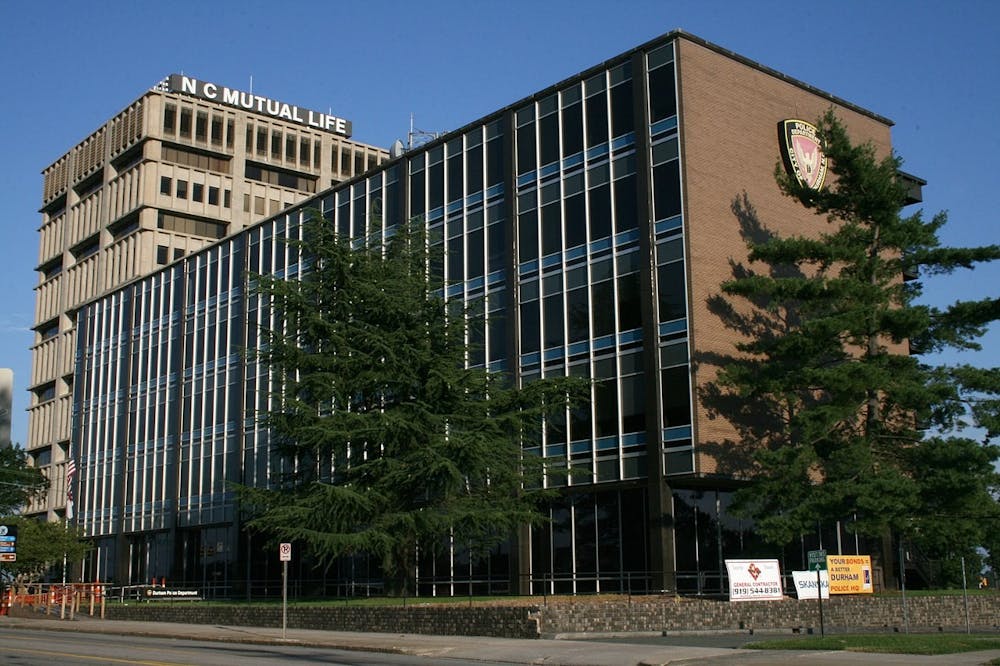In the wake of sustained protests for racial justice and police reform in 2020, Durham has taken steps to move towards a reimagined future for the city’s public safety officials.
The Community Safety Department, created in 2021, aims to provide unarmed alternatives to traditional policing in some crisis situations.
According to Durham At-Large Council Member Jillian Johnson, Trinity ‘03, these situations include “panhandling calls, welfare check [and] people who are having a mental health crisis.”
Along with unarmed responders, Durham also plans to implement a co-response model, where social workers answer crisis calls along with armed police officers. The program is still in the development stage, with four pilot programs set to launch soon, said Ryan Smith, Sanford ‘14 and director of the Community Safety Department.
The first pilot program is crisis call diversion, which would embed mental health clinicians in Durham’s 911 call center in order to avoid confrontation with law enforcement, Smith said.
The second pilot would send community response teams to crisis calls. A community response team “is a three person team that would put an advanced [emergency medical technician] with a licensed clinician and a peer support specialist to respond to a subset of nonviolent behavioral health calls as first responders,” Smith said.
For mental and behavioral health calls that may have a higher safety risk, the third pilot program would send co-response teams that would pair “crisis intervention trained officers with licensed mental health clinicians,” according to Smith.
The last pilot involves dedicated follow-ups to reconnect to people within 48 hours of the immediate crisis. Smith said this effort is crucial to connecting people to the care they need.
“I think that in all circumstances where contact with the carceral system is avoidable, it should be avoided,” Johnson said. “The vast majority of the work that is being handled now by police does not actually need to be an armed response. It's just that armed response is all that we have.”
The initial funding for the new program came partly from Durham Police Department and partly from other city departments.
In the 2021 budget, Durham City Council took five unfilled jobs from the police department to create the Community Safety Department. Smith said that the budget for the new department is currently $3.3 million, but they plan to ask for more funding as the program expands.
Durham’s efforts are similar to some other cities around the country.
“When we look at other cities that are already doing this, we see a lot of evidence that this kind of work can be done in a way that's consistent with everybody’s safety,” Smith said.
Smith noted that the crisis call diversion pilot program has been modeled by the cities of Houston, Austin and Philadelphia, and the community response team pilot comes from efforts of cities like Denver, Colo., Albuquerque, N.M. and San Francisco.
“We're excited to be part of that learning cohort, so that we can learn from them, and they can learn from us, and we can try new ideas and get some data from other cities to see how things are working,” Johnson said.
The department’s future
The Community Safety Department was created before the 2021 municipal elections under a different set of council members.
“I think the previous Council was more supportive broadly of diverting police resources to community safety,” Johnson said, “The majority of current council members have shown that they're more reluctant to do that.”
Smith, on the other hand, said that the effort has received broad support across Durham government.
“We have been doing this work over the last six months of planning in a really collaborative way,” he said. “We work regularly with [the Durham Police Department], as part of our multi-agency planning team, with [Durham Police Chief Patrice Andrews], and they're supportive of the plans that we laid out.”
Get The Chronicle straight to your inbox
Sign up for our weekly newsletter. Cancel at any time.
Durham City Council Member Leonardo Williams said the lack of progress is a logistical issue. The Council is waiting on Smith to tell them what human resources are needed before filling positions.
“[The positions] don’t have to come from the police department,” Williams said. “I want to ensure that the public knows that we're not interested in politicizing this as some groups have done. We're interested in actually solving the problems by giving the department what they need.”
The department's purpose and next steps
City leaders argued that the Community Safety Department can play a role in solving the issue of gun violence in Durham. Johnson noted that prevention is the primary focus for reducing gun violence.
“The Community Safety Department in particular would be managing contracts with those kinds of prevention services and reentry services that prevent recidivism … the kind of diversion programs that we have for first time misdemeanors,” Johnson said.
Williams emphasized the need for additional programs to supplement progress towards these goals.
“Unarmed officers [are] just one component,” he said. “We also have to look at public safety and how public safety addresses or impacts education … the financial sector, health sector. We have to start looking at this public safety matter more holistically.”
Anisha Reddy is a Trinity junior and a senior editor of The Chronicle's 118th volume.

